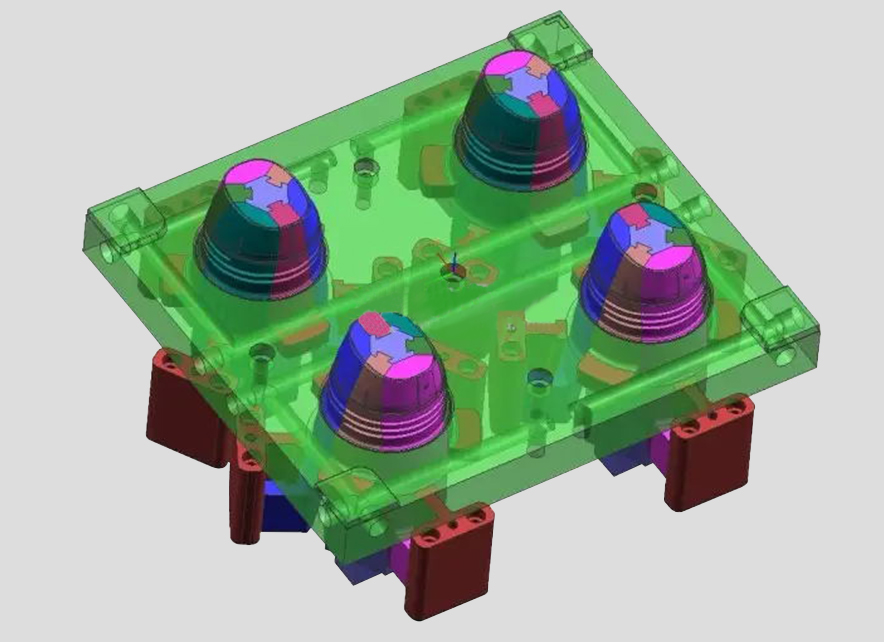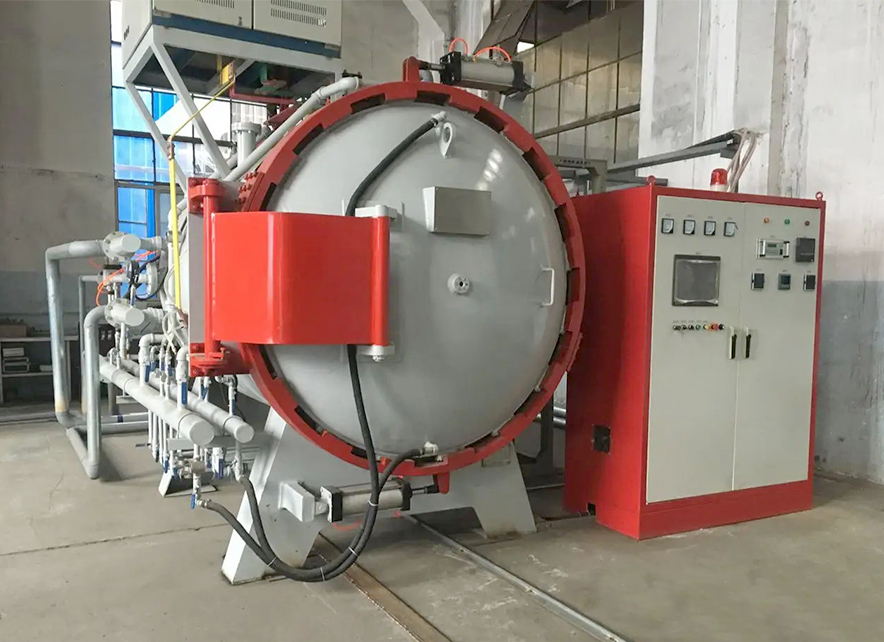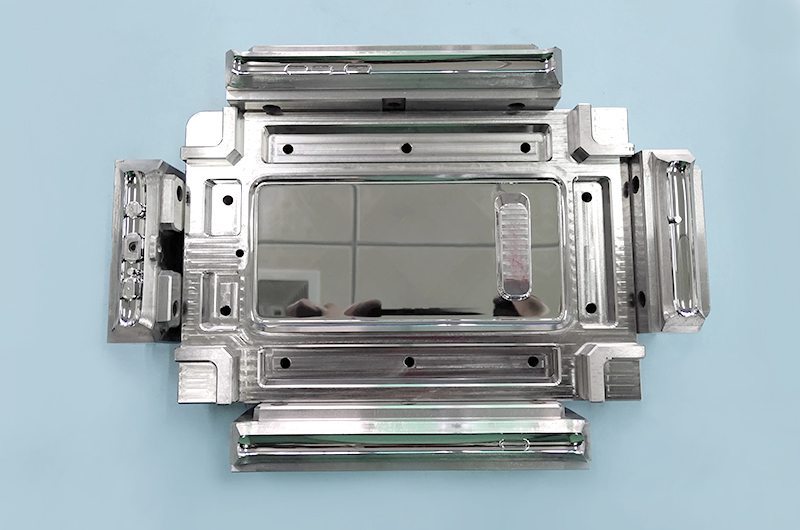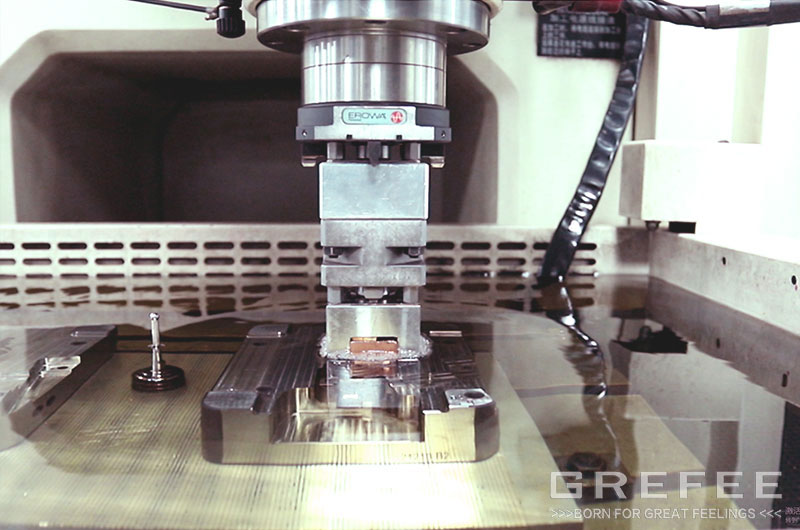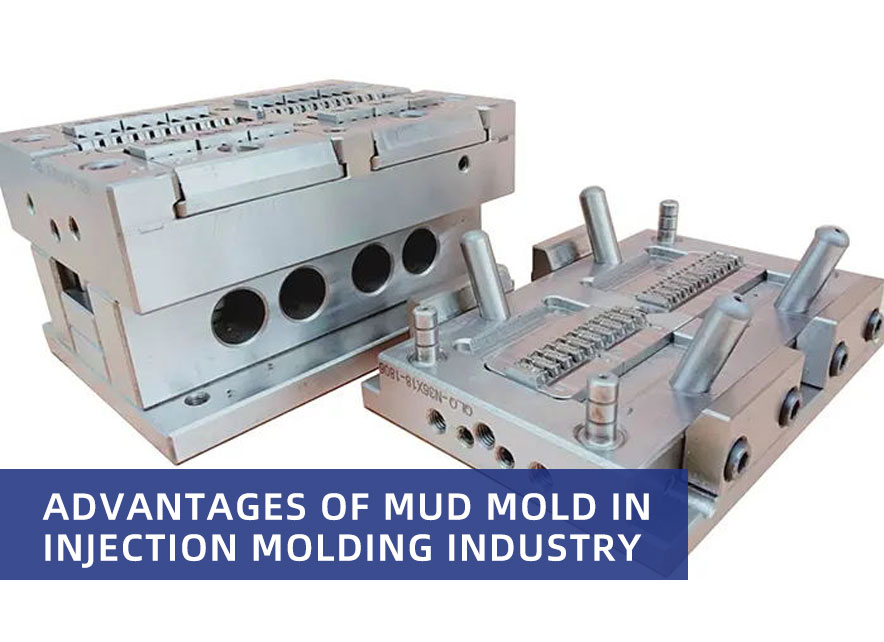Slow or fast wire feeding, for wire cut parts?

Posted on : June 16 , 2022 By GREFEE
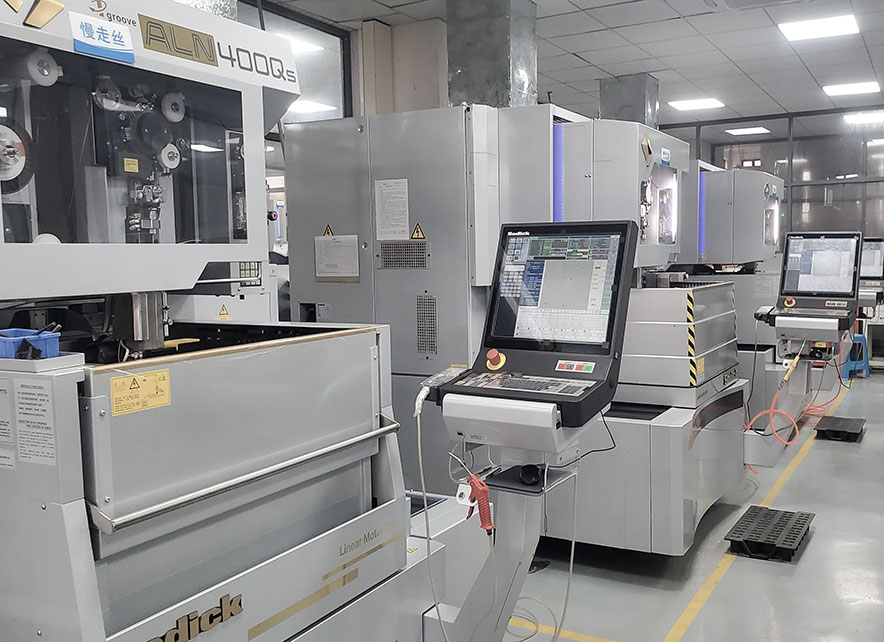
What is slow wire-feeding?
Slow wire-feeding is a type of CNC machine lathe that can fabric a high temperature of more than 6000 degrees to remove the ablated metals for cutting the workpiece through pulse spark discharge. There is a gap between the on-line electrode and the workpiece. So, the metal will be removed by continuous discharge.
Edges of slow wire-feeding machining
Since higher needs are laid on the manufacturing accuracy and surface equality requirements of precision, complex and long-life stamping molds, the fast wire-feeding no longer be able to meet the requirements of precision molds fabrication. This situation improves the technology development of slow wire-feeding machining technique, which plays an indispensable role in other machining techniques.
(1) Machining accuracy improvement
Multi-time sawing is the basic means for the machining accuracy and surface quality improvement of slow wire walking. It is formed by one-time cutting, the accuracy is improved by two-time cutting, and the surface quality is improved with more than three times cutting. In the cutting corners, the lag of electrode wire will lead to the corners collapse. To enhance the accuracy of corner cutting, several dynamic corner processing strategies are required, like the automatic change of machining speed, automatic adjustment of water pressure, control of processing energy, etc.
Advanced slow wire-feeding machining lathes adopt high precision and fine machining circuits to enhance the glancing flatness of workpieces and machining accuracy of thick workpiece. To perform the micro finishing of small round corners, narrow slots, narrow grooves and micro parts, 0.02~0.03mm electrode wire is suitable for carry out the top CNC low-speed wire EDM lathes.
The mechanical accuracy, pulse power accuracy and servo control accuracy (including the control of mechanical motion, pulse parameters, wire feeding system and working fluid system) have reached a very high level for the guarantee of the high precision machining. Water temperature controller render the temperature in the lathe is the same as the water temperature, which minimizes the deformation of lathes. One means to obtain excellent dynamic performance and high positioning accuracy is by the help of the closed loop digital AC (DC) servo control system.
(2) Surface quality daily improvement
Advanced slow wire-feeding machining lathe adopts the non-anti electrolysis pulse power supply of which the average voltage is zero. The damages of this kind of power supply has been minimized. Besides, due to the improvement of the pulse power, the high peak and narrow pulse width (microsecond level) are adopted. Most times, the material takes away a high amount of the heat during the gas phase ejection. Consequently, the crazing is improved effectively due to the low temperate of the surface of the workpiece. This not only increases the machining efficiency but also enhances the surface quality.
The non-electrolytic power supply for wire electrode cutting makes the surface deterioration layer be controlled within 2 μm below. There is no difference between the wear resistance of the cutting edge of cemented carbide die and that of grinding. It is even better than that of mechanical grinding. An increasing number of parts are machined by “cutting instead of grinding” in the cnc wire cut edm machine factories.
(3) Processing efficiency increase
Due to the development of nanosecond high peak current pulse power supply technology and detection, control and anti-interference technology, slow wire-feeding lathe working efficiency is increasing, too. So far, the highest processing efficiency of the advanced slow-wire feeding lathe reaches to 500㎜²/min, which has a great significance for the technology improvement in the thick workpiece processing efficiency. For instance, some aluminum cnc wire cut parts factories cutting a 300mm thick aluminum cnc wire cut part, the machining efficiency can be 170㎜²/min. For processing workpieces of which thickness is changeable, its processing parameters can be adjusted by automatically detecting the thickness of machined parts to in case the break, reaching the highest efficiency of the status.
On top of that, the rapid automatic threading technology that is from the advanced slow wire-feeding machining lathe of which the time cost for automatic threading is less than 15s, demonstrating the processing efficiency is increased. The double-wire automatic exchange technology adopts the electrode wire of 0.20 ~ 0.02 ㎜ automatically. The wire diameter of the thick wire used for the first cutting is generally 0.25 mm to improve the processing efficiency, and it allows the coreless cutting, then fine wires are used for trimming. Generally, 0.10mm fine wires are used to cut small rounded corners, which can improve the accuracy and save 30% ~ 50% of the cutting time in general.
(4) Development of automation, intelligence and informatization
For reducing the human intervention and achieving the expected process indicators, the automation, intelligence and informatization of slow wire feeding processing have made a big progress.
The complete process expert system of the slow traverse machining machine provides an array of parameters according to the machining requirements. It not only includes common electrode wire grades and the workpiece materials, but also provides processing parameters of special materials, such as PCD and PCBN, which can decide their own standards according to whether the upper and lower nozzles touched the workpiece, distance, whether they are refined in cutting air or open surface, and which processing strategy gives priority to precision, surface roughness and efficiency. The discharge expert system deals with the random factors in cutting. With the random factors like cutting in, cutting out, section change, center cutting, near edge cutting, large section high-speed cutting, and other aspects, using the self-adaptive control strategy and automatic control function in the machining process to obtain constant and high-efficiency machining without breaking the wires.
Another practical function is the automatic non hole detection. If the pre-hole is forgotten or the hole position is offset, the machine tool will automatically move to the next pre-hole in the automatic skip machining,, so as to prevent the machine from stopping without human intervention. When a short circuit occurs after threading, it can automatically search for the position to solve the short circuit, and improve the reliability of continuous unattended operation. The CNC edm wire cut machine processes with a standardized mechanical interfaces to create an intelligent manufacturing system. The manipulator of 3R system or EROWA system allow the automatic exchange of workpieces (pallets) be easily achieved. Along with the experts and electrode wire automatic exchange technology, the whole processing process can be completed automatically.
Machining accuracy of slow wire-feeding
The machining accuracy of the high-precision slow wire-feeding lathe can be controlled within ± 0.002 mm, and its maximum machining efficiency can reach 400 ~ 500 mm ²/ Min, and the surface roughness can arrive at Ra0.05 μ m, which brings perfect processing surface quality with almost no deterioration layer. Most of the main machines have a heat balance system, which allows the use of the electrode wire of 002mm for micro finishing. Some lathes has complete functions and a high degree of automation, allowing them to cut in the oil and can directly complete the high precision mold machining. Besides, the service life of these molds has reached the level of mechanical grinding.
Typically, the slow wire feeding lathe adopt the non-resistance anti-electrolysis power supply, in which the submerged machining and taper cutting are available. The practical maximum machining efficiency is 150 ~ 200 ㎜ ²/ Min and the best surface roughness reaches RA < 0.4 μ m. The cutting accuracy can reach ± 0.005 mm, which utilizes the electrode wires of 0.1mm and above to cut. The anti-collision protection system prevents the occurrence of the collision damage caused by programming error or mis-operation. Automatic threading mechanism should be available or optional.
Difference between medium, slow and fast wire-feeding
Medium-speed, slow and fast wire feeding mean the WEDM machine tools. According to the wire speed, WEDM can be divided into three types: high-speed reciprocating WEDM (fast wire), low-speed unidirectional WEDM (slow wire) and vertical self rotating WEDM. It can also be divided into single column cross table type and double column type (commonly known as gantry type) according to the form of worktable.
(1). Speed of wire-feeding. Fast wire feeding speed is higher or equal to 2.5m/s. The common value is 6 to 10m/s, while the wire speed of slow wire cutting is less than or equal to 2.5m/s. Common values are 0.25 to 0.001m/s.
(2). Working status of electrode wires. Fast wire feeding cutting lathe is used repeatedly and reciprocating wire feeding. Slow wire feeing cutting lathe is disposable and one-way move.
(3). Material of electrode wire. The material of the electrode wire of the fast wire-feeding cutting lathe includes molybdenum wire and tungsten molybdenum alloy, whereas the slow wire-feeding cutting utilizes the brass, copper and electrode wire of copper based alloy or clad material.
(4). Working solution. The working solution of the fast wire-feeding cutting lathe is emulsion or water-based working fluid, whereas the slow-moving wire cutting lathe is deionized water, and kerosene is used in some specific cases.
(5). Accuracy. Its accuracy can reach to 0.1um. the accuracy of slow wire-feeding is the highest among the three different speed of wire -feeding.
(6). Surface finish of cutting surface. The surface finish of the slow wire feeding is the highest, followed by the medium-speed wire feeding, and the fast wire feeding is the poorest.
Maintenance and considerations for wire cutting:
(1). The operator must have an intimate knowledge of the operation technology of the wire lathe. Before starting, some specific areas of the lathe must be applied the lubricate according to the requirements (the lubricating oil must meet the requirements of the lathe specifications).
(2). The operator must have an intimate knowledge about the wire cutting technique, and select the appropriate processing parameters, following the operation procedures to avoid the breakdown like wire broken.
(3). The handle ought to be pulled out in time after the handle is used as the wire storage cylinder to in case the accidents caused by throwing the handle out when the wire storage cylinder rotates. When loading and unloading the electrode wire, prevent the electrode wire from getting stuck. The replaced waste silk should be placed in the window of Yuanbao to prevent electrical short circuit, electric shock, wire breakage and other accidents, resulting from the circuit and wire feeding system mixing. Pay attention to prevent wire breakage and collision of transmission parts due to the inertia of wire drum. Consequently, when the machine stops, press the stop button as soon as possible after the wire storage cylinder has just been replaced.
Overall, compared with fast wire feeding lathes, slow wire feeding lathes have more advantages in processing efficiency, precision, surface quality and so on. Although the price of the slow moving machine tool is expensive, with the rapid development of the manufacturing industry, it will be more widespread in different processing fields.CONTACT
MORE BOLG
Categories

Try GREFEE now,for free
We keep your uploaded files confidential and secure.

